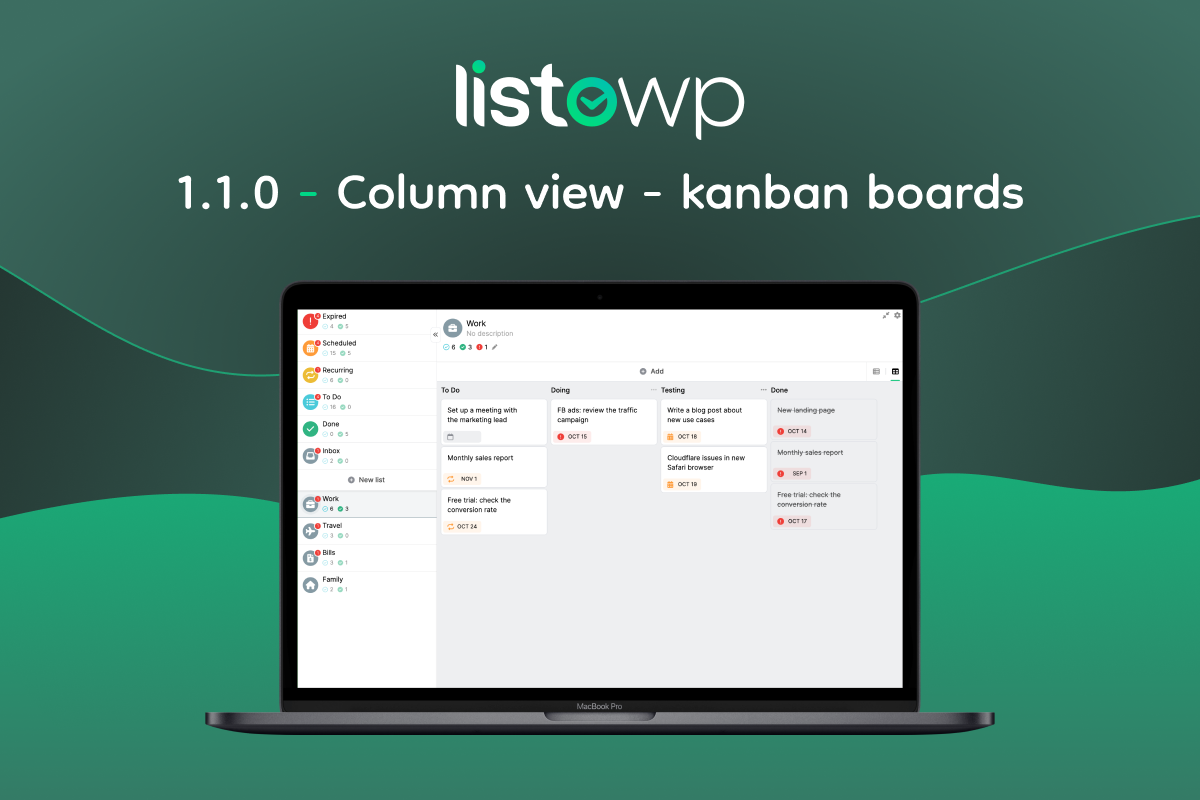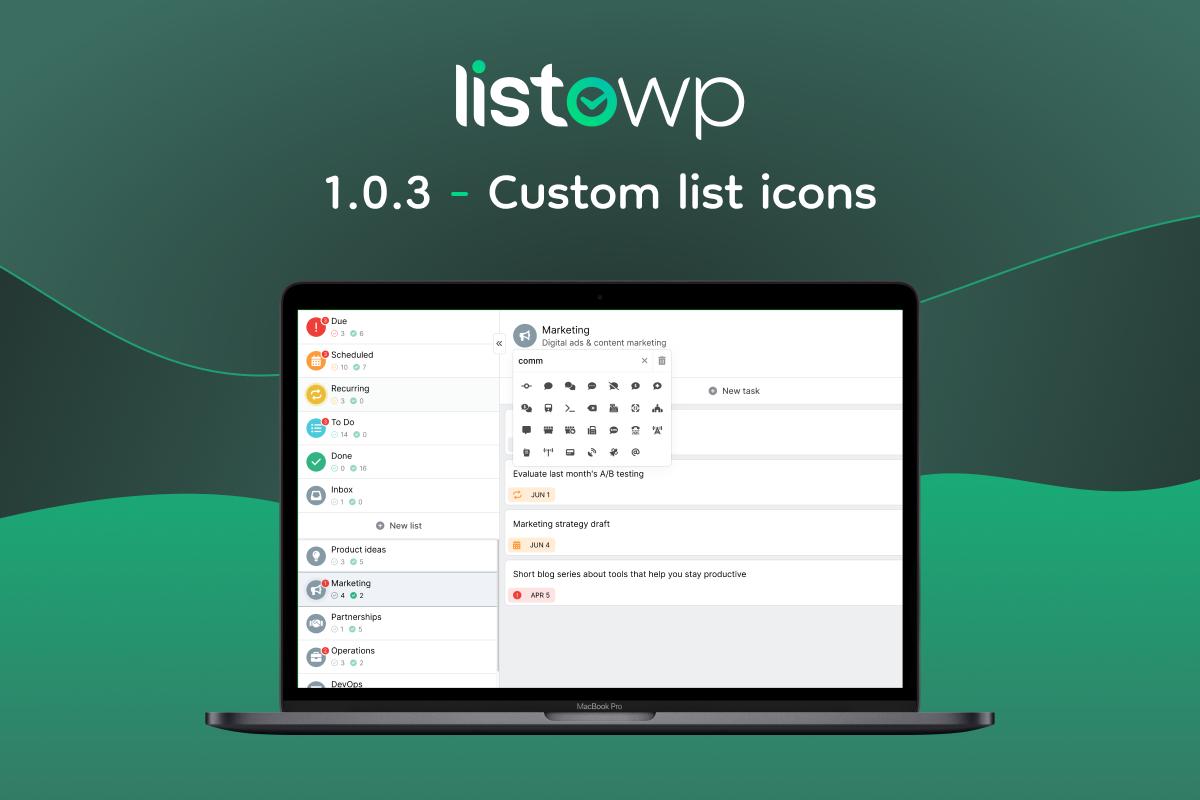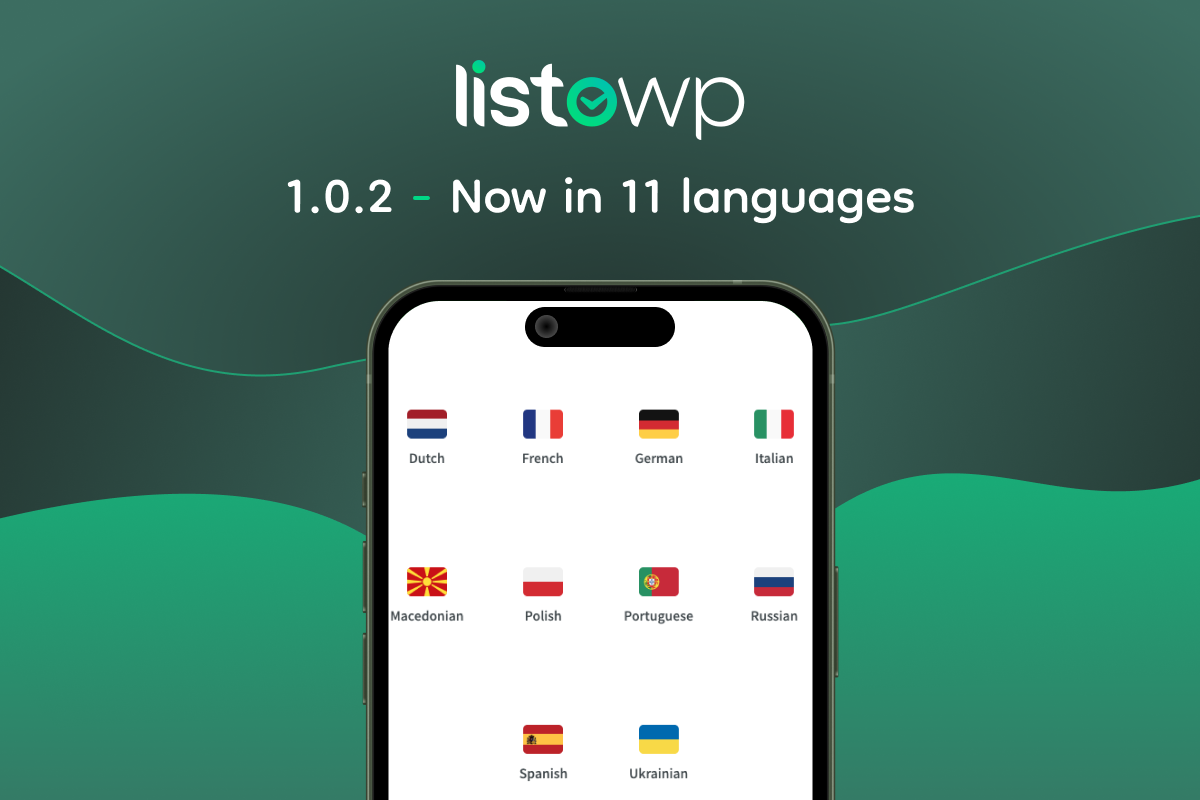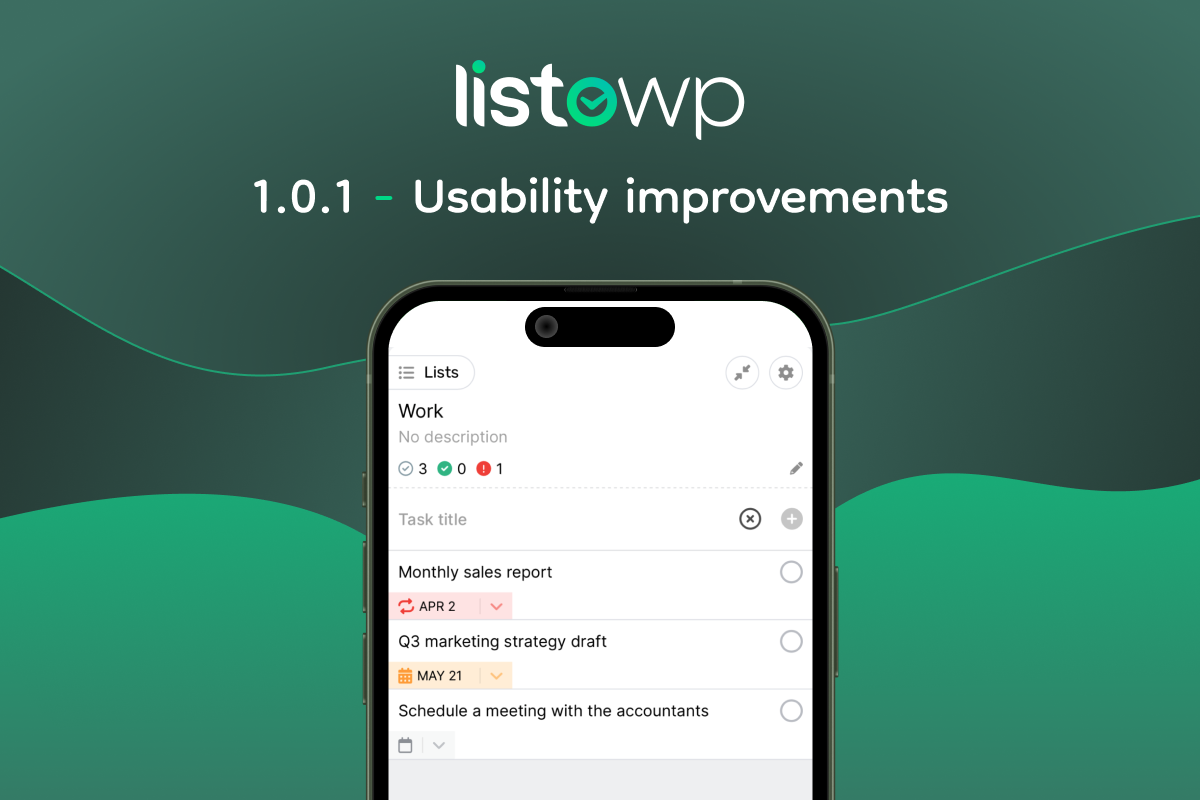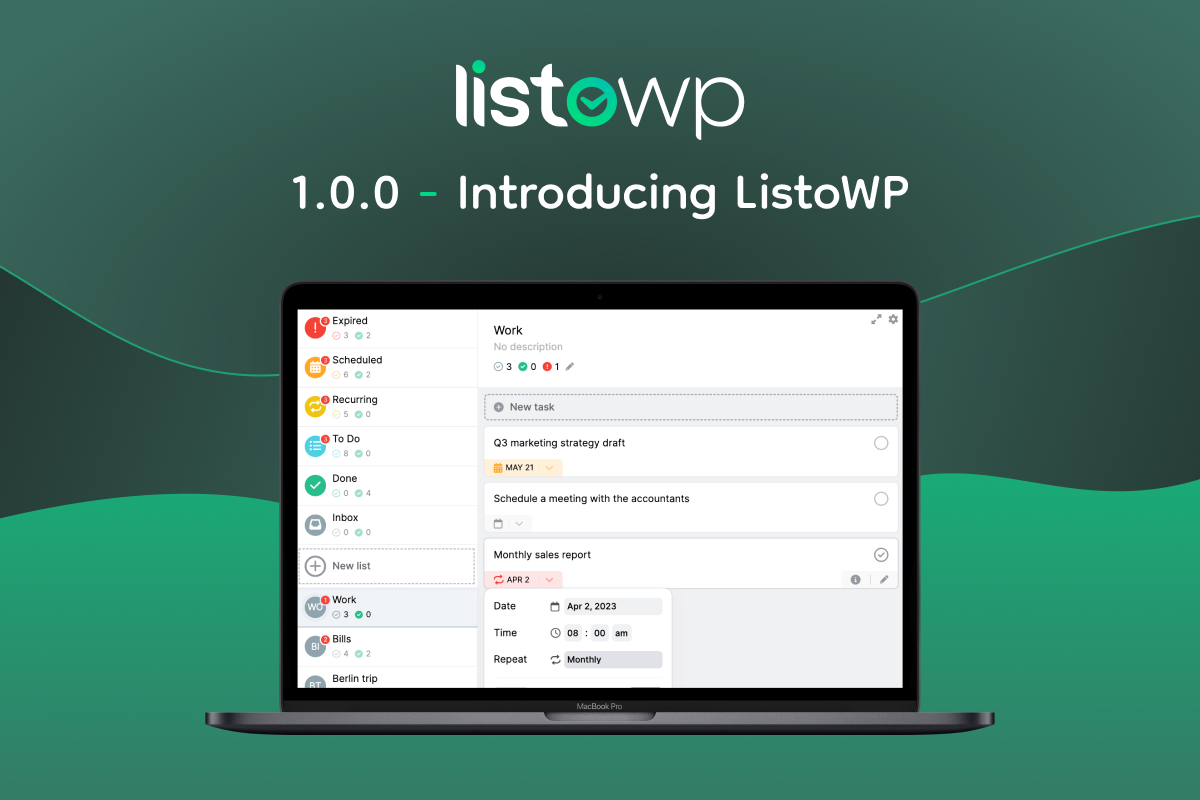Introducing basic list sharing - ability to collaborate on your lists with other users. What's new Collaboration - list sharing We have implemented basic list sharing, which allows multiple people to collaborate on one list. The feature is very basic however, and will need to be expanded with activity log, comments and notifications in the future. RIght now it is however possible to share a list with other people and work on it together, which is a major improvement over previous versions. Listo 1.2.0 allows sharing a list with other site members 1.2.1 bugfix release We have released version 1.2.1... Read more
New release: ListoWP 1.1.0
Introducing "Column View" - a kanban-style board view for your tasks. What's new Column view Custom Lists now have a Column View, turning your lists into interactive boards. Based on a popular kanban methodology, the Tasks in this view "travel" left-to-right between columns. Each column represents a different step of the process. The first column is always "to do" and the last column is always "done", but you can create your own Columns in between. A commonly used column setup is: to do, doing, review, done. This way you can quickly see which tasks are already in progress, which need... Read more
New release: ListoWP 1.0.3
Custom list icons, collapsible sidebar, and handy UI shortcuts. What's new Custom list icons It is now possible to set a custom icon on any user-made List. Simply click the icon next to the List name, and a dedicated interface will pop up. Here you can search icons by keywords (English only) and choose one or reset back to "List initials". To make things easier, the search interface will attempt to search for icons relevant to the list name. If nothing is found, generic icons for "list" will be returned. Users can now choose one of the hundreds of icons... Read more
New release: ListoWP 1.0.2
We added a Russian translation - ListoWP now speaks English and 10 other languages. What's new This release adds the Russian language translation provided by a professional translation team. This brings our total language count to eleven (English and ten translations). If you would like us to add another language, or you found an issue with an existing translation, please refer to this post. With the addition of Russian in 1.0.2, ListoWP now ships with ten translations Changelog A full list of changes can be found here.
New release: ListoWP 1.0.1
The first of many regular updates to ListoWP is here! What's new Due date improvements If a Task has no due date, opening the date interface will now pre-set the due date to "today" instead of staying empty. Quickly scheduling high-priority tasks is now easier. If a Task has no due date, opening the date interface now defaults to "today". Loading indicators & interface responsiveness To improve user experience and make sure we communicate well when things are processing, we added loading indicators to user preferences and the delete buttons. It should be now more clear that after clicking an... Read more
New release: ListoWP 1.0.0
ListoWP 1.0.0 is out after several months of development and testing - and we couldn't be more excited! What is ListoWP? In short, ListoWP is a To-Do & Reminders plugin for WordPress. It lets you and all your users privately manage their Tasks and Lists, set deadlines, and even have recurring Tasks. It features several Smart Lists that automatically collect Tasks based on their status, due dates, recurrence rules, etc. What are the features? Since ListoWP is a young project, and we have tons of ideas for it, the list below will probably quickly become outdated. We invite you to... Read more


